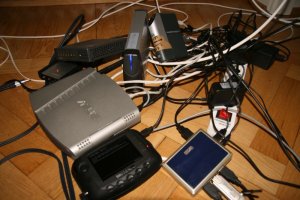Procrastinating real work, I documented my home audio server setup. I needed a cross-platform solution, and as a first step, I settled with MPD. The setup is only a few days old, and I may decide to change software eventually. But the current setup works under Gnome, Windows, Mac OS X and even on my Nokia 6233.

What may be missing is FM/DAB Radio and streaming of TV, but I’m not sure the little NSLU2 is up to it. We’ll see.
The writeup on how to do this is long, so I put it at a separate page:
http://josefsson.org/grisslan/audio.html
(This is a continuation of my series to document the devices that run my home, the first was the internet setup).

